Introduction: Stepping Back in Time
Hoi An is not just a city; it’s a living museum, a captivating blend of history, culture, and undeniable charm. As you cross the bridge into its ancient heart, the modern world melts away, replaced by a symphony of golden walls, vibrant silk lanterns, and the gentle rhythm of the Thu Bon River. Once a bustling trading port from the 15th to the 19th centuries, Hoi An’s UNESCO-listed Old Town has preserved its rich heritage, making it a timeless destination unlike any other in Vietnam.
This guide is your passport to exploring the soul of Hoi An, from its iconic landmarks to its hidden corners. We’ll delve into the must-do experiences, uncover the city’s culinary secrets, and provide the essential tips you need for an unforgettable journey.
History of Ancient Town in Hoi An
Imagine a place where time stands still. That’s exactly what you’ll find in Hoi An Ancient Town, located a short 30-kilometer trip from Da Nang along the Thu Bon River. This isn’t your typical tourist destination; it’s a destination rich with stories and history.
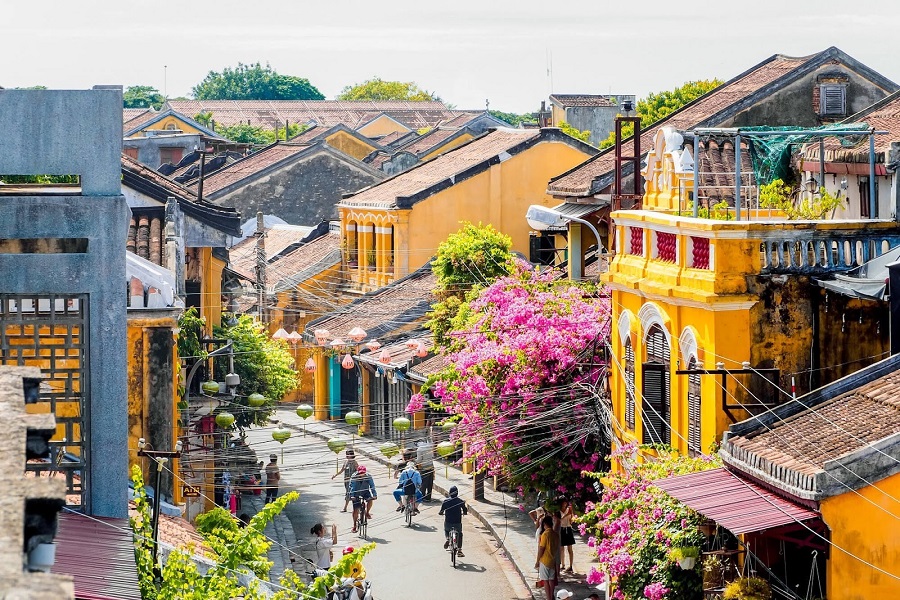
For over 400 years, Hoi An was a crucial trading hub, connecting merchants from Europe and Asia. The town’s unique architecture is a direct result of this multicultural past, with Chinese shophouses sitting beside Japanese-style bridges and French colonial villas.
Hoi An’s preservation is so remarkable that in 1999, UNESCO officially recognized it as a World Cultural Heritage site. The town’s strict regulations have kept its original, soulful character intact, ensuring that every ancient house and pagoda you see is a genuine piece of history. Walking through the lantern-lit streets is like walking through an open-air museum, offering a deep dive into the historical significance of this incredible place.
Why Hoi An Captivates the World: A Tapestry of History and Charm
The magic of Hoi An lies in its ability to transport you to a different era. The city’s unique charm is a result of centuries of cultural exchange and a remarkable commitment to preservation.
- A Melting Pot of Architecture: Hoi An’s buildings are a physical representation of its past as a major international port. You’ll see a seamless blend of Vietnamese wooden houses, ornate Chinese temples, and French colonial buildings. The iconic Japanese Covered Bridge stands as a testament to the city’s early Japanese community and remains its most famous landmark.
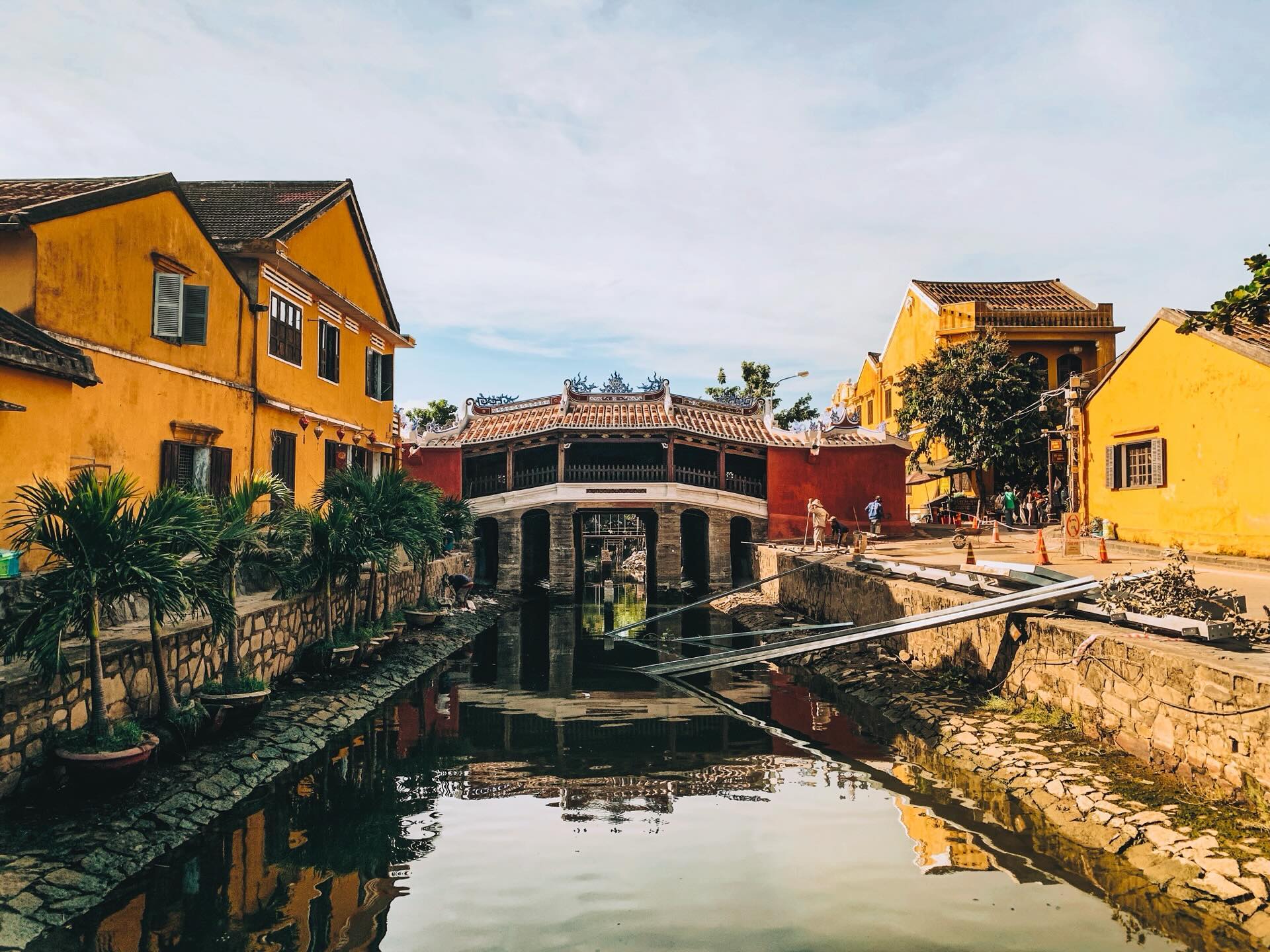
Credit: internet
- The City of Lanterns: The tradition of hanging silk lanterns dates back centuries, but it’s during the monthly Lantern Festival (on the 14th day of every lunar month) that the city truly comes alive. On these nights, all electric lights are switched off, and thousands of colorful lanterns illuminate the streets, creating a magical, dreamlike atmosphere.
- A Protected Treasure: The Ancient Town is a pedestrian-friendly zone, a peaceful escape from the traffic of larger cities. To enter the town and its key heritage sites, visitors purchase a ticket which helps fund the preservation of this historical gem.
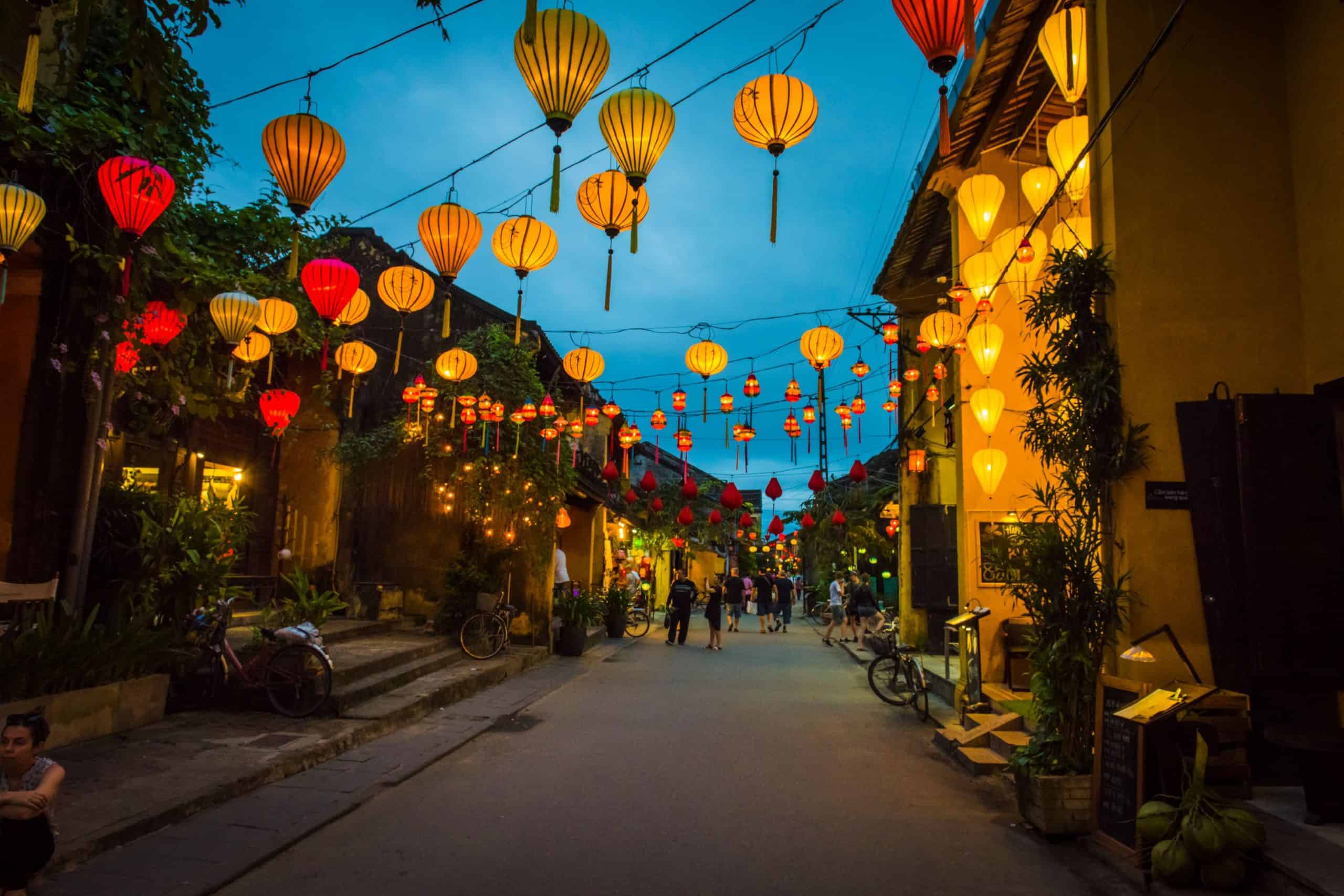
Must-Do Experiences in Hoi An Ancient Town
A visit to Hoi An is a feast for the senses, with activities and sights for every kind of traveler.
- Walk the Golden Streets: Simply wandering through the narrow, car-free streets is an experience in itself. Marvel at the yellow-walled houses, discover hidden alleyways, and soak in the serene atmosphere.
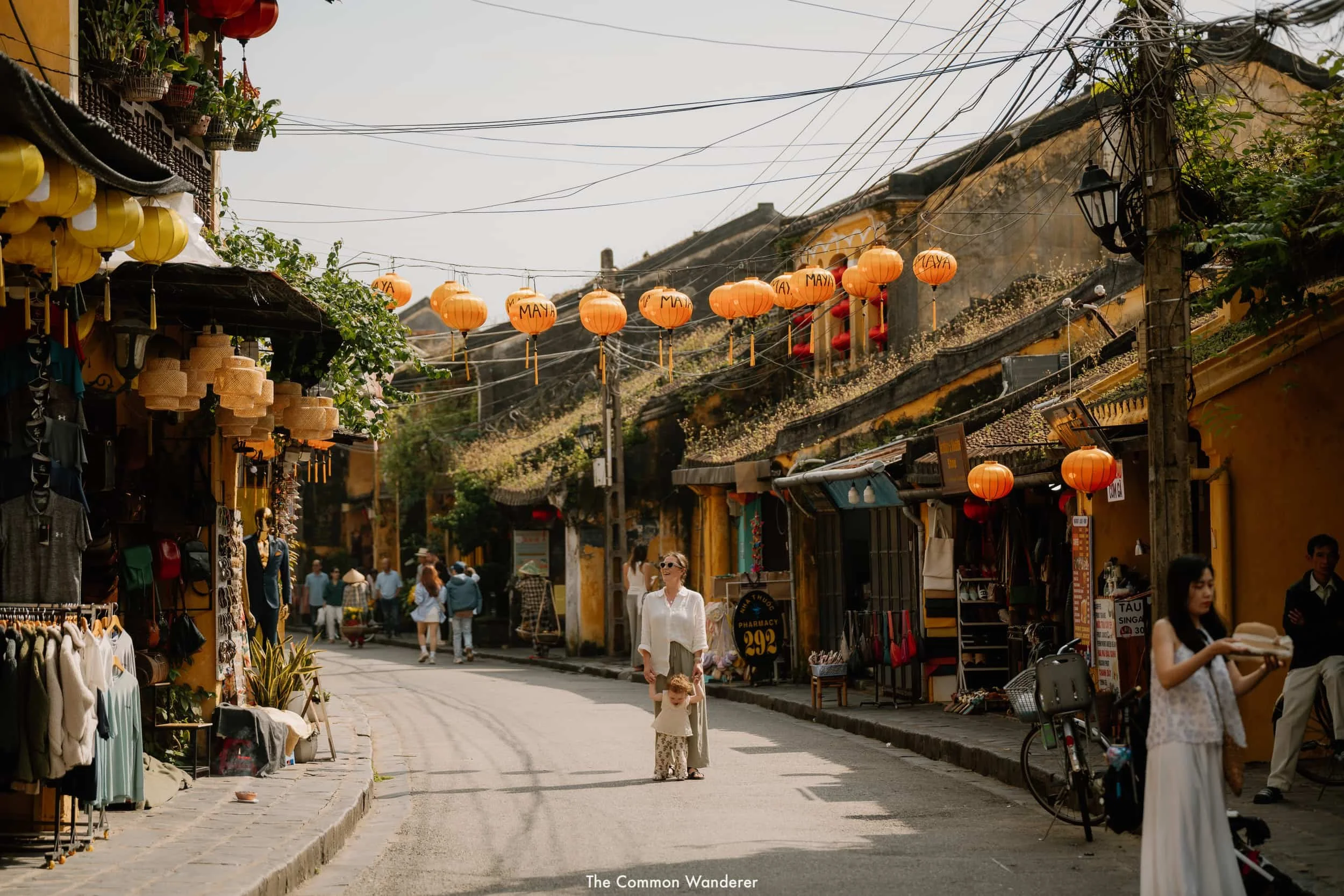
Credit: internet
- Explore Historic Houses & Assembly Halls: Your Ancient Town ticket grants you entry to several key heritage sites. Don’t miss:
- The Japanese Covered Bridge (Chùa Cầu): The city’s symbol, a beautiful bridge with a shrine inside. Built in the 1590s, the Covered Bridge is located adjacent to Nguyen Thi Minh Khai Street and Tran Phu Street. The bridge is an excellent example of traditional Eastern architecture. Despite being built by Japanese merchants around the middle of the 16th century, through restoration, the Japanese Covered Bridge has become a harmonic architectural combination between Vietnamese, Japanese and Chinese cultures.
- Trieu Chau Assembly Hall (Hội Quán Triều Châu): Trieu Chau Assembly Hall was built by the Chaozhou community in 1845 to worship the god Phuc Ba for safe voyage and smooth sailing. Architectural motifs are decorated according to the folk legends, many of which are embossed with porcelain
- Phuc Kien Assembly Hall (Hội Quán Phúc Kiến): A stunning, ornate temple and communal house built by Chinese merchants.
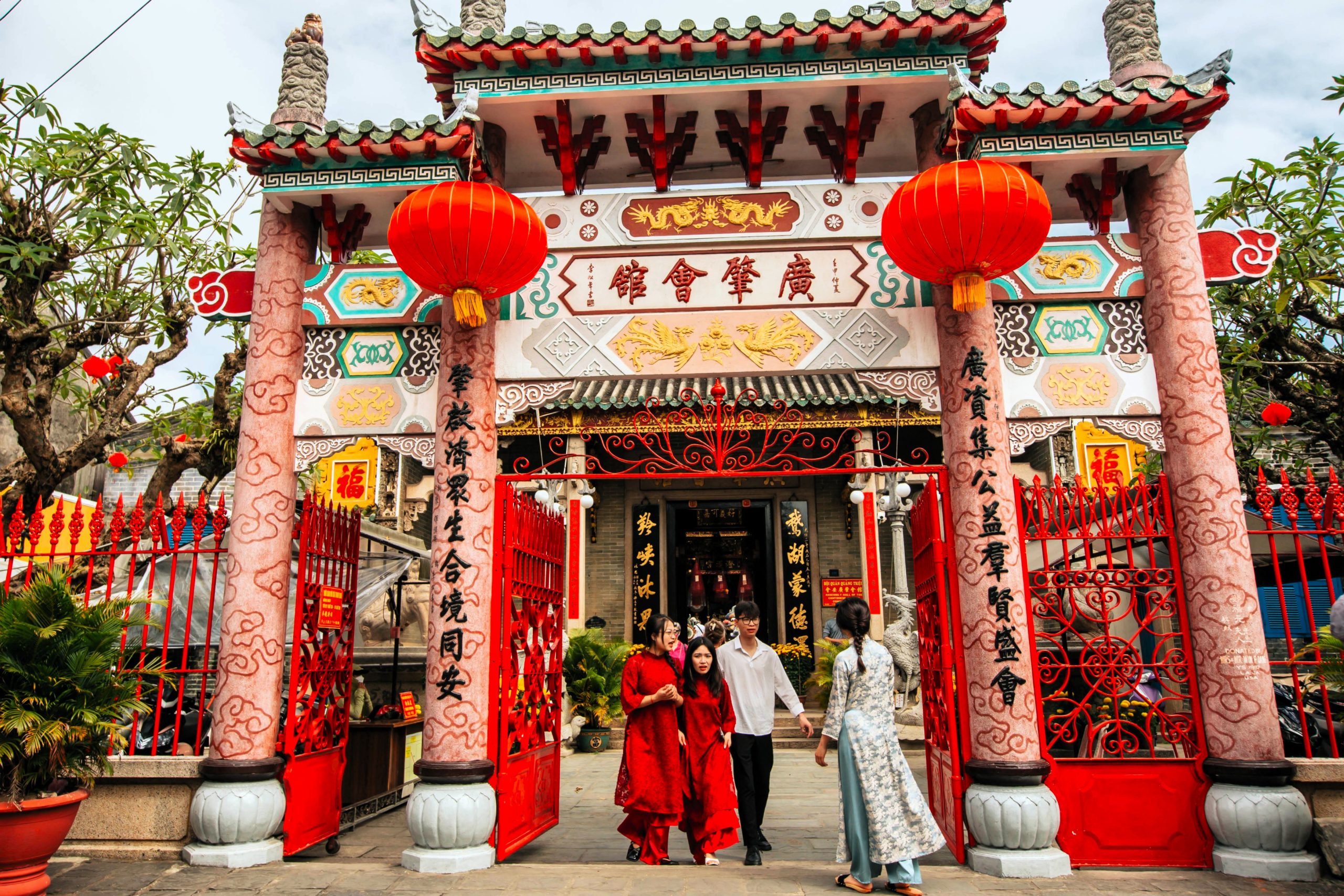
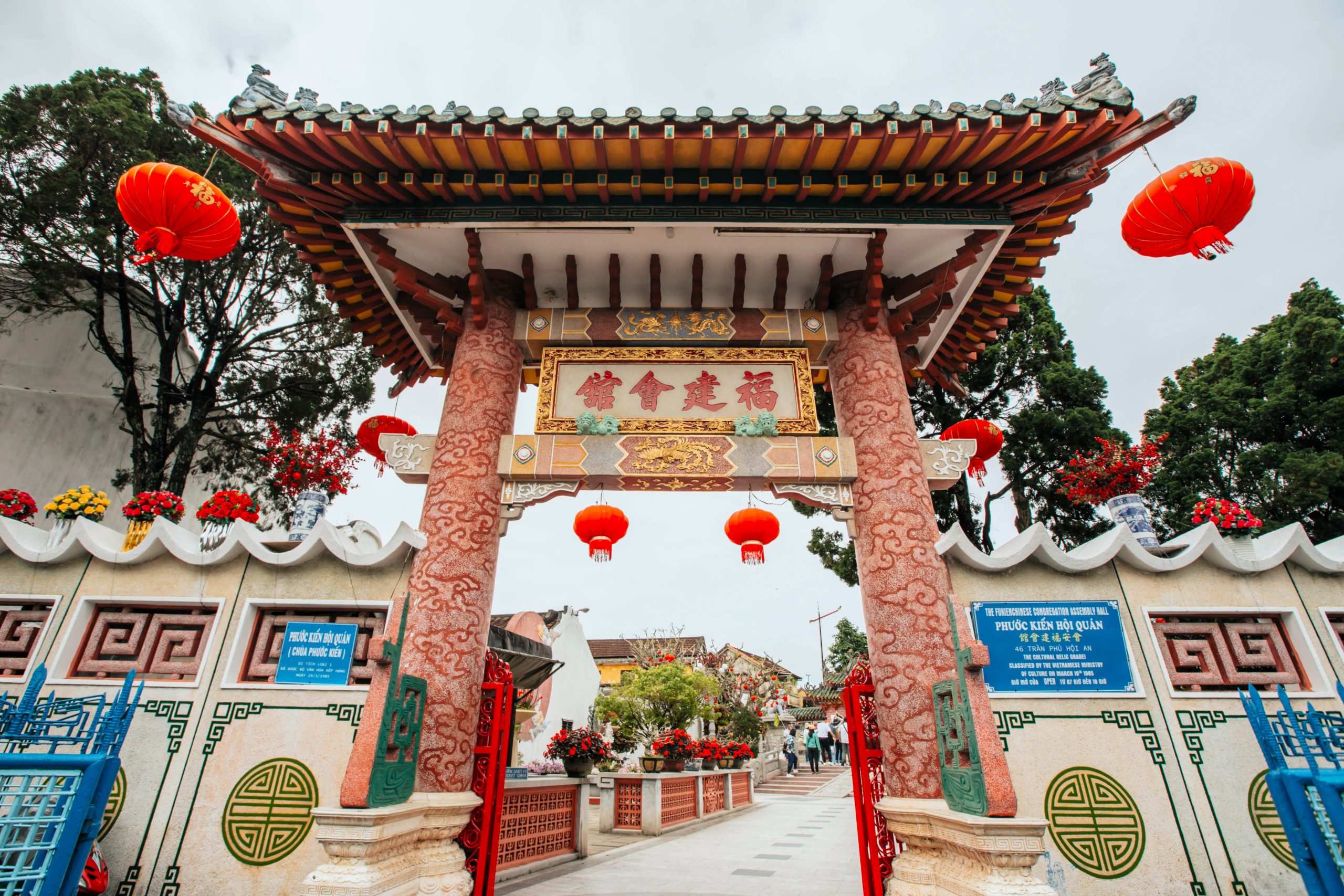
Credit: internet
- Tan Ky Old House (Nhà Cổ Tấn Ký): A perfectly preserved 18th-century house that showcases a mix of Vietnamese, Chinese, and Japanese architectural styles. This was the first house to be honored as a national heritage site and is also frequently visited by various governors. Over centuries, even after the historic flood of 1964, the ancient house remains miraculously intact. The wooden East Asian-inspired decorative patterns in the house are delicately carved, indicating the exchange between different architectural styles.
- Tran Family Chapel (Nhà thờ tộc Trần): The Tran Family Chapel is one of the famous destinations of Hoi An with its well-preserved antiquated garden architecture, exquisite decoration, intricate details and numerous valuable antique artifacts. The Chapel is a harmonious and unique mix of 3 different architecture styles: Japanese – Chinese – Vietnamese. For history-enthusiast, a visit to the Tran Family Chapel will be absolutely remarkable as the atmosphere and tradition of history are imbued in the relics of the Tran Family.
- A River Cruise and Lantern Release: As dusk falls, head to the Thu Bon River. Take a small wooden boat for a tranquil cruise and, for a small fee, release a floating lantern onto the water—a beautiful tradition believed to bring good luck.
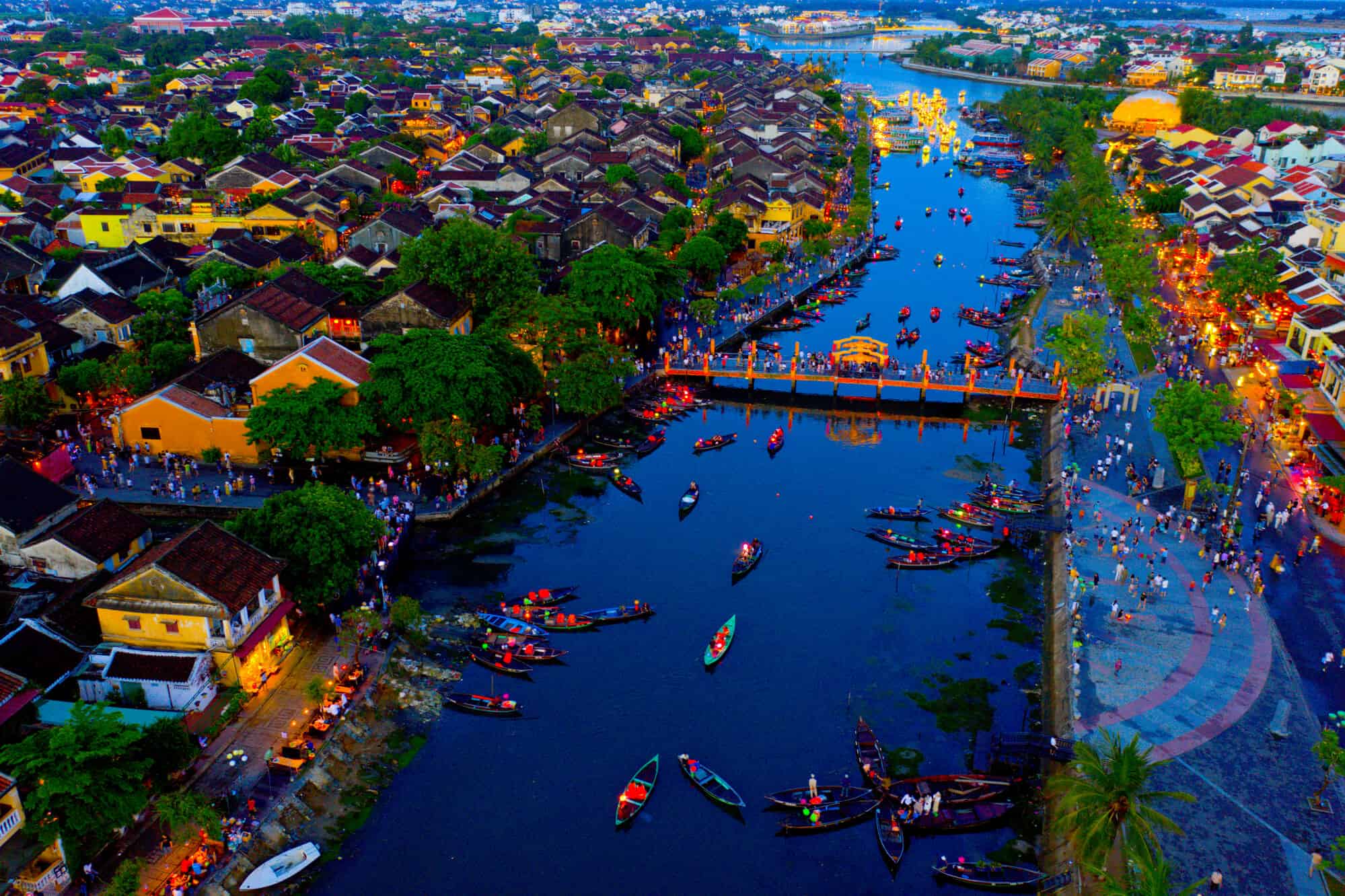
- Get a Custom-Made Outfit: Hoi An is famous for its tailors. With hundreds of shops to choose from, you can have a custom-fitted suit, dress, or shirt made in as little as 24 hours. The quality is exceptional and the experience is a highlight for many visitors
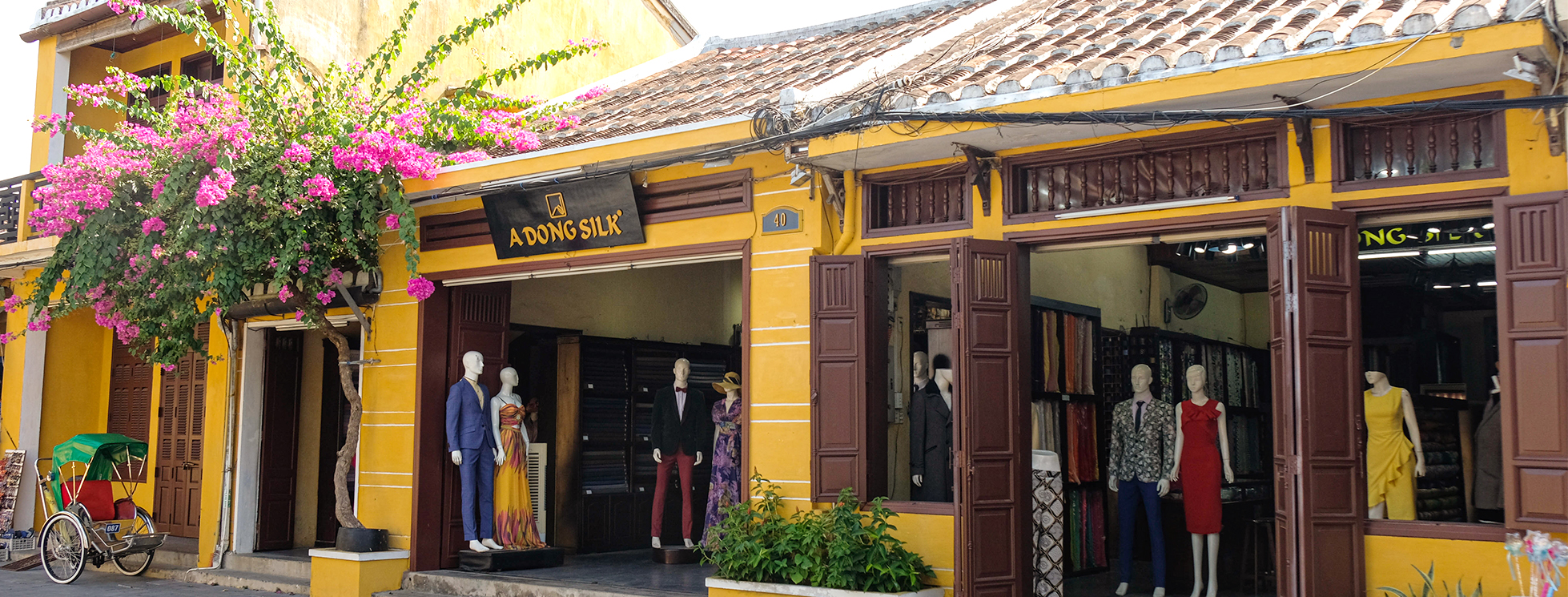
Credit: internet
A Foodie’s Guide to Hoi An: A Culinary Journey of a Lifetime
Hoi An’s cuisine is a unique blend of Central Vietnamese flavors, with several signature dishes you won’t find anywhere else.
- Cao Lầu – Specialty in the Ancient Town: The city’s most famous dish. It features thick, udon-like noodles, tender pork, fresh greens, crispy pork skin, and a unique sauce. The legend says the water used to make the noodles must be drawn from a special ancient well.
Where to try: Lien Thao, 16 Thái Phiên is a highly-rated local favorite.
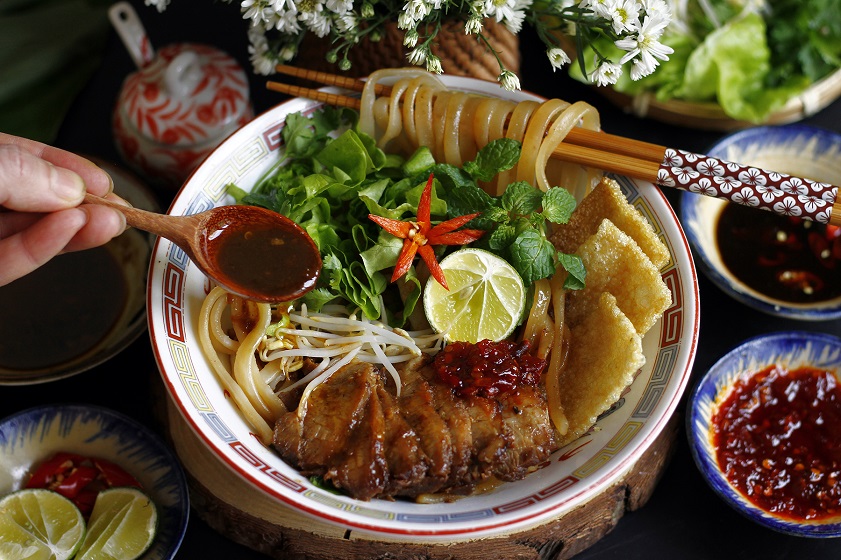
- Quang Noodles – Hoi An Signature disk: Another Central Vietnamese staple, but with Hoi An’s own twist. Thick turmeric noodles are served in a small amount of rich, flavorful broth with shrimp, chicken, or pork, topped with roasted peanuts and fresh herbs.
Where to try: Mì Quảng Ông Hai, 6A Trương Minh Lượng.
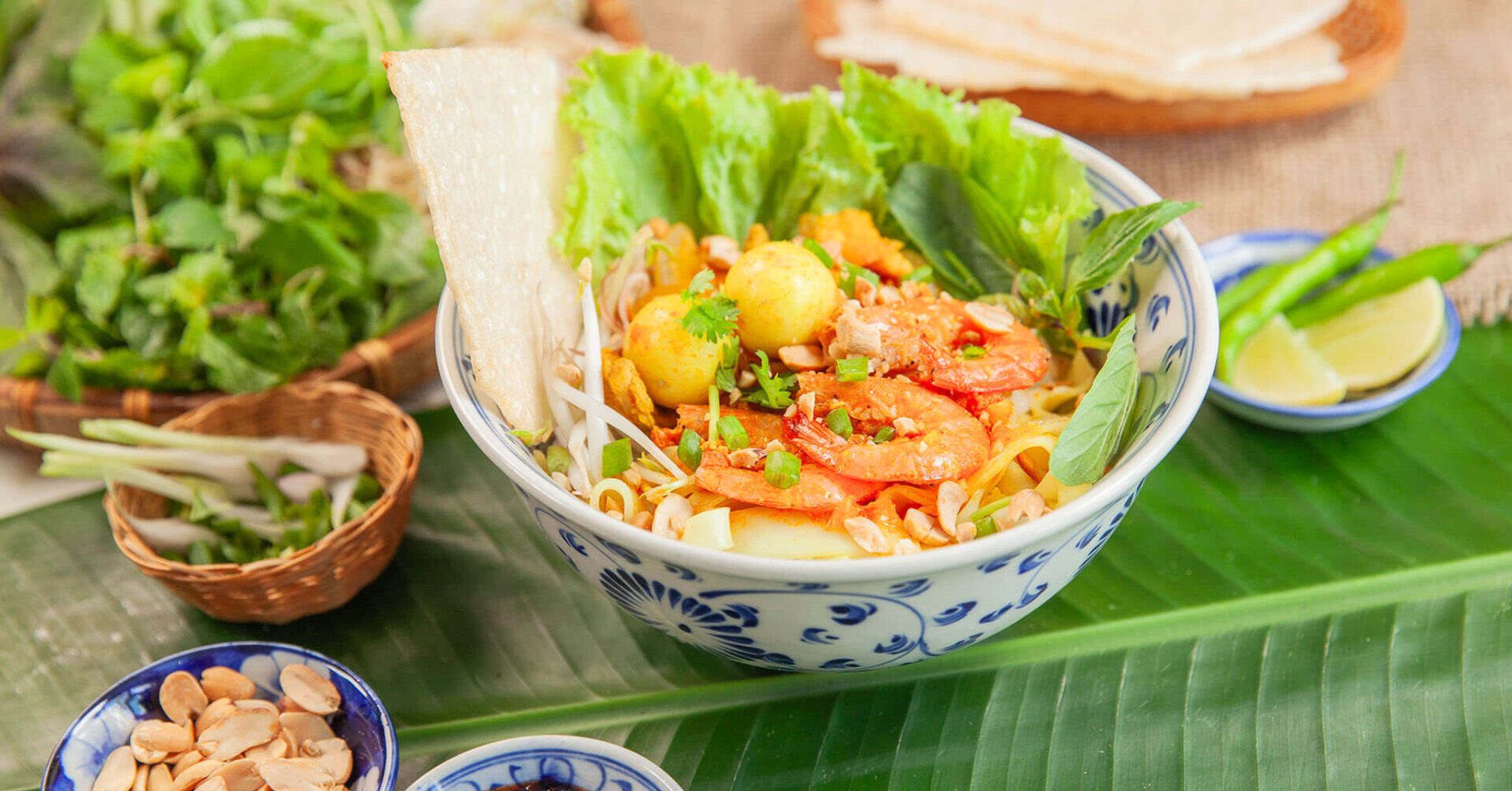
- Banh Mi – Most famous Vietnamese street food: While found everywhere in Vietnam, Hoi An’s Bánh Mì is legendary. Stuffed with a medley of fresh vegetables, herbs, pâté, and various meats, it’s often considered the best in the country.
Where to try: Bánh Mì Phượng, famously visited by celebrity chef Anthony Bourdain.
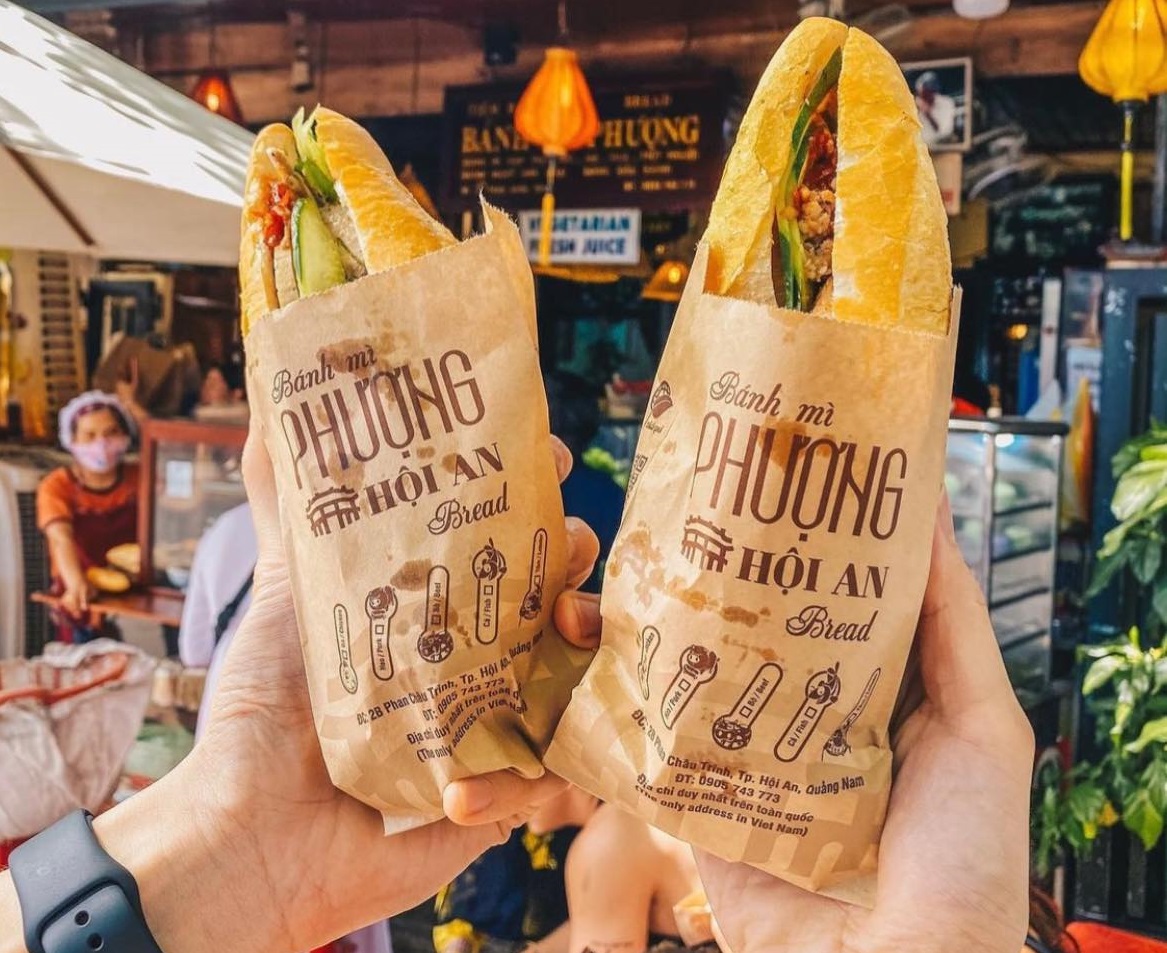
- Bánh Xèo (Vietnamese Pancake): Tourists are captivated by the crispy golden pancake and the savory flavour of fresh shrimp and meat filling. The sauce is a mixture of rich soy sauce and fragrant peanuts, which can please even the most demanding customers. It will usually cost you 10,000 – 20,000 VND/serving.
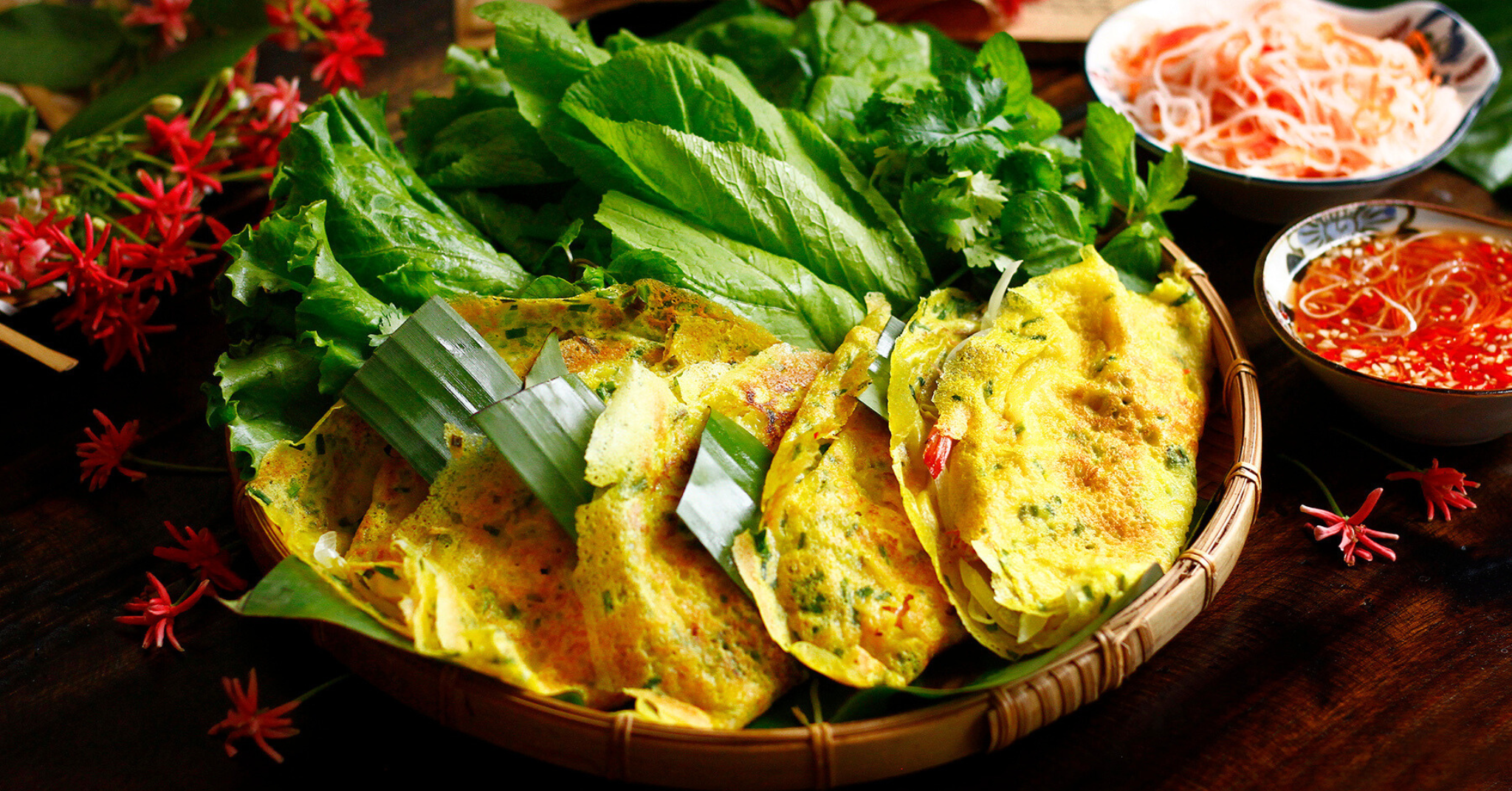
- Chicken rice – Hoi An style: The taste of Hoi An chicken rice is one-of-a kind thanks to its special sauce. The light yellow sticky rice grains, delicious chicken with sweet and sour pickled salads never fail to amaze diners. With only 20,000 – 30,000 VND (1$), you can order a delicious Hoi An shredded chicken rice dish.
Where to try: Cơm Gà Bà Buội, 22 Đ. Phan Chu Trinh
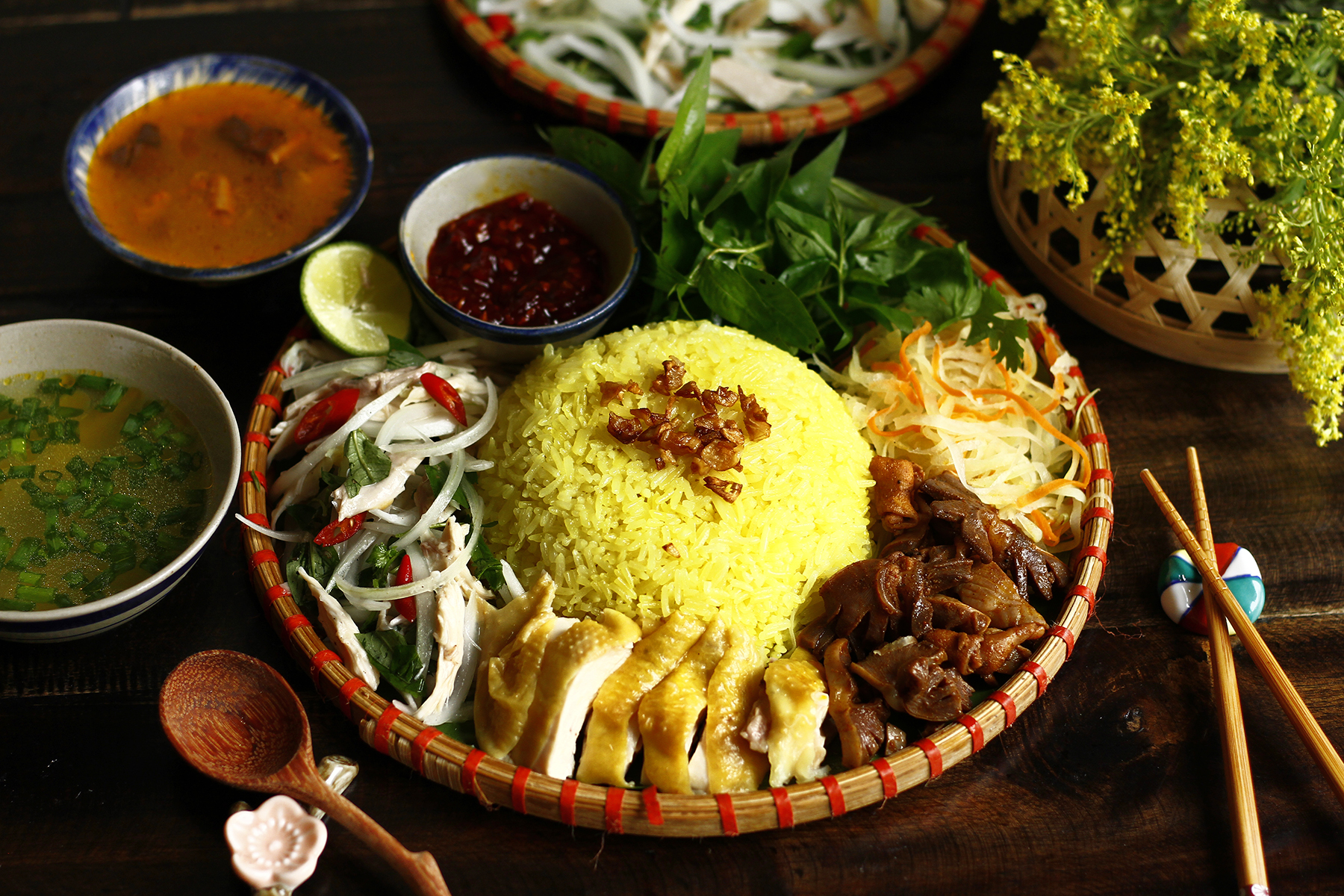
Practical Travel Tips for Your Hoi An Journey
To make your trip to Hoi An seamless, here are some essential tips from the experts at Asian Rainbow Travel.
- Hoi An Ancient Town Ticket: A ticket costs around 120,000 VND (~$5 USD) for international visitors. It grants you access to the pedestrian-only zone and a choice of entry into several heritage sites.
- Getting Around: The Ancient Town is best explored on foot. For wider exploration, bicycles are readily available for rent, and many hotels provide them for free.
- Best Time to Visit: The dry season (February to August) offers sunny days and calm weather. The wet season (September to January) can bring rain and even occasional flooding, but it also means fewer crowds and a unique, atmospheric charm.
- Booking a Tour: A guided tour with a local expert can unlock the stories behind the architecture, introduce you to the best local food spots, and provide a deeper understanding of the city’s rich history.
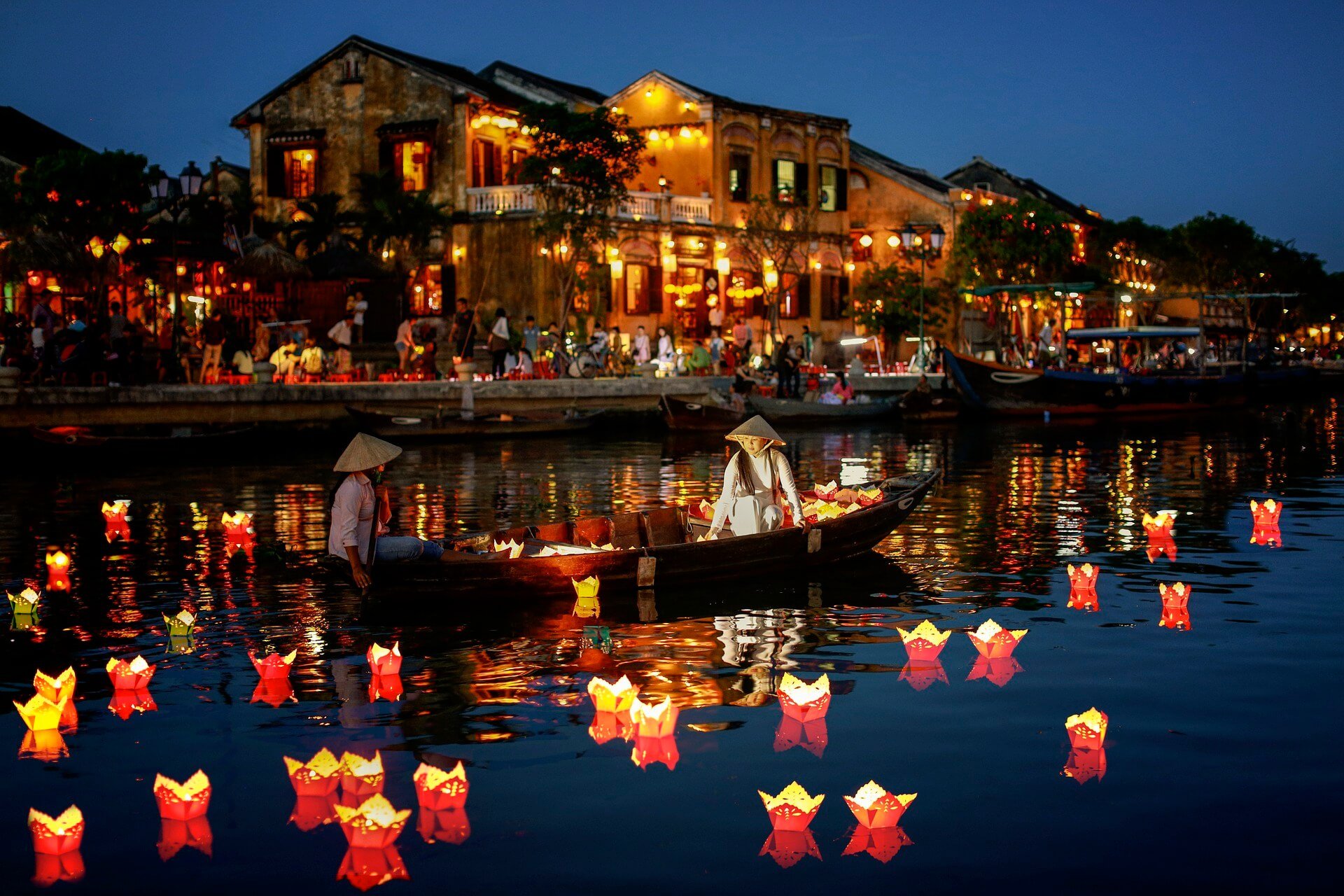
The Asian Rainbow Travel Difference
Hoi An’s beauty is best experienced with a local touch. At Asian Rainbow Travel, we specialize in crafting personalized and immersive tours. We don’t just show you the sights; we connect you with the people and stories that make this city so special. From a private cooking class to a guided photo tour of the hidden alleyways, we’ll design an itinerary that turns your Hoi An trip into a truly personal journey.
Ready to step into the past and explore the City of Lanterns? Contact us today to start planning your custom Hoi An adventure.
📞 WhatsApp: +84 97 902 23 02
📍Facebook: Asian Rainbow Travel
Your Travel – Your Style
Asian Rainbow Travel – Creating journeys that reconnect and inspire, across generations.















